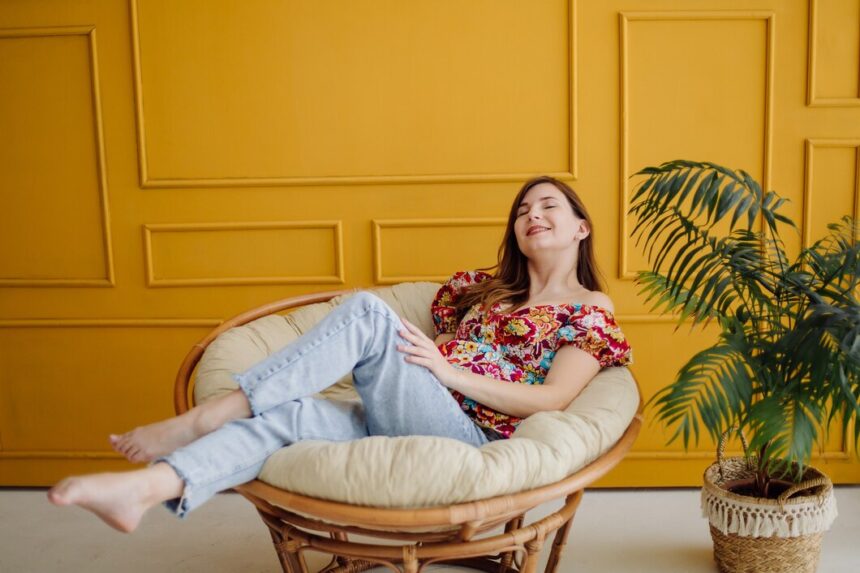Color has a profound impact on our emotions, perceptions, and overall well-being. From the vibrant hues of a sunset to the calming tones of a serene landscape, colors influence our mood and behavior in subtle yet significant ways. In interior design, understanding the principles of color psychology can help create spaces that promote relaxation, productivity, and positive energy. Let’s explore how different room colors affect mood and health:
1. Blue: Calm and Serenity
Relaxation
Blue is often associated with calmness, tranquility, and relaxation. It has a soothing effect on the mind and body, making it an ideal choice for bedrooms, bathrooms, and meditation spaces.
Stress Reduction
Studies have shown that exposure to blue environments can help lower blood pressure, reduce stress levels, and promote feelings of peace and serenity.
2. Green: Renewal and Balance
Harmony with Nature
Green represents growth, renewal, and harmony with nature. It is often used in interior design to create spaces that evoke feelings of freshness and vitality.
Health Benefits
Being surrounded by greenery or green-colored walls can have positive effects on physical and mental health, including improved concentration, reduced eye strain, and enhanced creativity.
3. Yellow: Happiness and Optimism
Energizing
Yellow is associated with sunshine, happiness, and optimism. It has an energizing effect on the mind and can help uplift mood and spirits.
Stimulation
Rooms painted in shades of yellow can stimulate mental activity, promote feelings of optimism, and boost creativity. However, excessive exposure to bright yellow may lead to feelings of agitation or anxiety in some individuals.
4. Pink: Tranquility and Compassion
Soothing
Pink is often associated with femininity, compassion, and tenderness. Soft shades of pink can create a soothing and nurturing environment, making it an ideal choice for bedrooms, nurseries, and relaxation spaces.
Stress Reduction
Studies have shown that exposure to pink environments can help reduce feelings of aggression, anger, and anxiety, promoting a sense of calm and well-being.
5. Gray: Balance and Sophistication
Neutrality
Gray is a neutral color that represents balance, sophistication, and understated elegance. It provides a versatile backdrop for other colors and can create a sense of calm and stability in interior spaces.
Timelessness
Rooms decorated in shades of gray exude a timeless and classic aesthetic, making them ideal for modern, minimalist, and contemporary design styles.
6. Red: Passion and Energy
Stimulation
Red is a bold and powerful color associated with passion, energy, and excitement. It can stimulate the senses, increase heart rate, and evoke feelings of intensity and warmth.
Attention-Grabbing
Rooms painted in shades of red can make a bold statement and create a sense of drama and impact. However, excessive use of red may be overwhelming and lead to feelings of aggression or agitation in some individuals.
7. Orange: Creativity and Vitality
Stimulating
Orange is a vibrant and energetic color associated with creativity, enthusiasm, and vitality. It can help stimulate mental activity, promote social interaction, and boost mood and motivation.
Warmth
Rooms decorated in shades of orange exude warmth and positivity, making them ideal for social gathering spaces such as living rooms, dining areas, and kitchens.
8. Purple: Luxury and Spirituality
Royalty
Purple has long been associated with royalty, luxury, and sophistication. It symbolizes wealth, power, and extravagance, making it a popular choice for creating opulent and elegant interior spaces.
Spirituality
In addition to its association with luxury, purple is also associated with spirituality, mysticism, and inner peace. It can help create a sense of introspection and contemplation in meditation rooms or sacred spaces.
Understanding the principles of color psychology is essential for creating interior spaces that promote mood, health, and well-being. By carefully selecting and incorporating different colors into room design, homeowners can create environments that evoke specific emotions, enhance productivity, and improve overall quality of life. Whether seeking tranquility in a blue bedroom, vitality in an orange kitchen, or sophistication in a gray living room, the strategic use of color can transform any space into a sanctuary of comfort and harmony.










